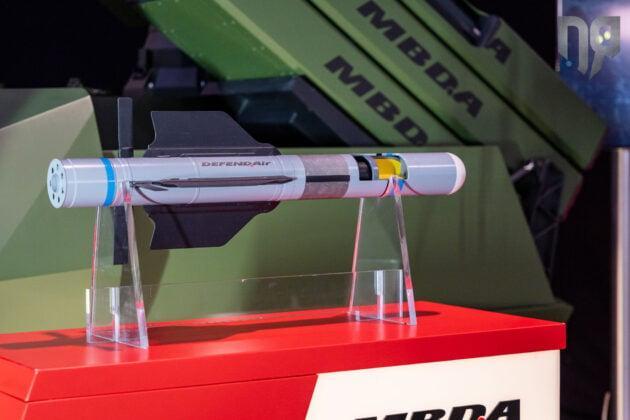
The German Bundestag’s budget committee has approved roughly €490 million ($563 million) to develop and procure a new short-range missile intended to defeat small unmanned aircraft, paving the way for a contract between the Bundeswehr and MBDA Deutschland.
The allocation, confirmed to the defense press by well-placed sources, follows approval earlier in the day by the defense committee of a related €25 million ($29 million) decision that enables the ministry to close a deal with the manufacturer.
According to reporting from hardpunkt, a little more than two thirds of the €490 million are earmarked for the development and qualification of the weapon that MBDA now markets as DefendAir, formerly referred to as the “Small Anti Drone Missile (SADM).” The remaining funds are intended for the initial call-off of serial production missiles. Parliamentary documents and industry briefings indicate the program includes not only the missiles themselves and the production line, but also the development and qualification of launch containers. Industry sources say serial production is scheduled to begin in 2029 and that deliveries to the Bundeswehr could start in 2030.
DefendAir has been selected by the Bundeswehr as a secondary armament for the Skyranger 30 air defense gun vehicle, hardpunkt reported. The defense committee approval addressed the separate funding package for the missile program; integration of the interceptor on the Skyranger was reportedly already covered in the vehicle’s development and procurement contract. Plans call for each Skyranger to carry at least nine DefendAir missiles, with procurement documents noting the possibility of twelve rounds per vehicle.
MBDA Germany is developing DefendAir by adapting its existing lightweight munition family, known in Bundeswehr classification as “Leichtes Wirkmittel 1.800 +” and sold commercially under the name “Enforcer.” The new interceptor adds an air-target seeker and a booster to extend reach relative to the baseline Enforcer round. Company and parliamentary summaries say the booster will raise the interceptor’s reach to roughly five kilometers, enabling engagement of small aerial threats at short ranges appropriate to vehicle-mounted, point-defense roles.
Documents circulated within the Bundestag show the program is built around a dual timetable: an immediate development and qualification phase paid from the approved tranche and a later production phase that will be triggered by follow-on orders.
German officials framed the move as part of ongoing modernization of ground-based air defense. The Skyranger 30, already in Bundeswehr acquisition plans, combines a 30 mm autocannon with sensor and command systems for short-range air defense; adding a dedicated interceptor is meant to expand the vehicle’s engagement options against small drones, loitering munitions and other low-signature threats.
Germany’s decision highlights a broader trend: European armies are investing in purpose-built, missile-based counters to small unmanned systems that can be deployed on mobile platforms. The DefendAir approach—combining a seeker, a booster and containerized launchers—reflects the operational problem many militaries now face in protecting maneuver forces and critical infrastructure from low-cost aerial threats.
The program’s timetable, with qualification work underway and production slated for the end of the decade, also signals how militaries are managing risks between short-term capability gaps and longer procurement cycles.